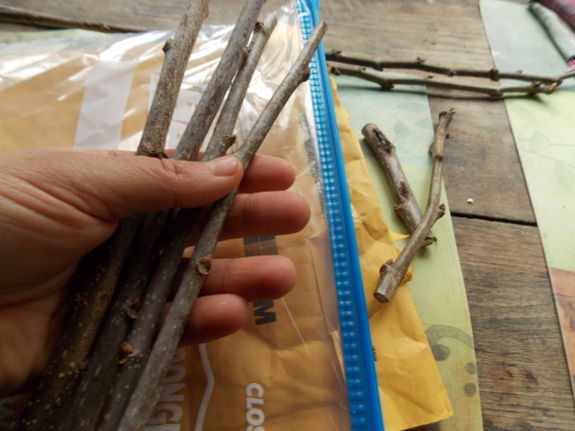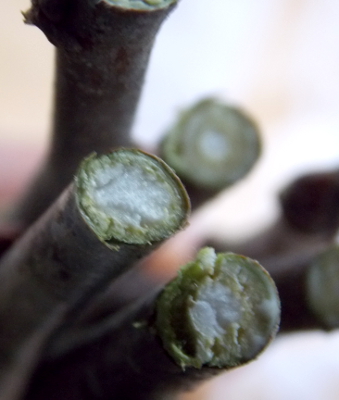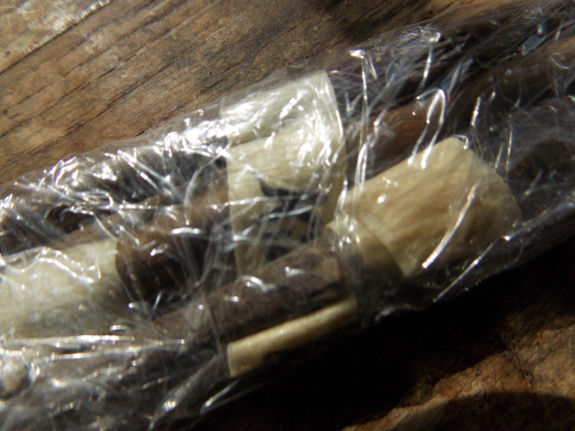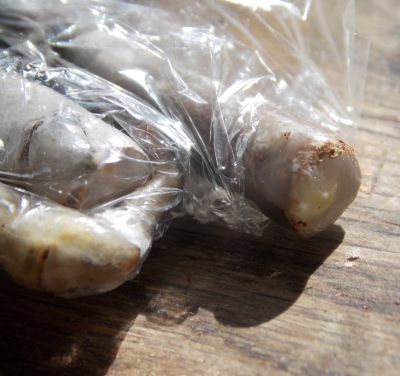
Mailing out scionwood

 Over most of the U.S., the beginning of February is the perfect time to cut scionwood to be grafted onto rootstocks or existing fruit trees later in the spring. So
the first task on my list
for February in recent years has been emailing scionwood swappers who
I've set up deals with earlier in the winter. We share mailing
addresses and reminders of the scionwood we each want to swap.
Over most of the U.S., the beginning of February is the perfect time to cut scionwood to be grafted onto rootstocks or existing fruit trees later in the spring. So
the first task on my list
for February in recent years has been emailing scionwood swappers who
I've set up deals with earlier in the winter. We share mailing
addresses and reminders of the scionwood we each want to swap.
If you don't have anyone to swap with, check out this post about my two favorite website for online scionwood exchange. From hanging out with the North American Scion Exchange group, I've also learned that it's better not
to wrap scionwood in wet newspaper. Instead, just cut fresh
twigs, slip them inside a ziplock bag, and add one drop of water. A
wit over there admonished us that if one drop of water really doesn't
feel like enough...and one more. As for shipping --- a padded
envelope seems to be sufficient, which will cost you less than $3 for
small quantities.

 I've
already got a tiny bundle of rare and precious apple scionwood waiting
in the crisper drawer of our fridge for the rootstock to arrive.
The pro who sent it painted beeswax on the cut ends of each twig, then
wrapped the scionwood in plastic wrap. He seemed like an expert if
his extensive list of apple varieties is any indication, so I suspect
his shipping method is also quite effective.
I've
already got a tiny bundle of rare and precious apple scionwood waiting
in the crisper drawer of our fridge for the rootstock to arrive.
The pro who sent it painted beeswax on the cut ends of each twig, then
wrapped the scionwood in plastic wrap. He seemed like an expert if
his extensive list of apple varieties is any indication, so I suspect
his shipping method is also quite effective.
As a side note, I am willing to
swap with newbies who don't have anything I want, but only if you do me
a favor in exchange. The favor usually involves taking a photo of
your experiment so I can share it with future readers. So if
you're interested in a fruit-tree variety you've heard about here, but
don't have an orchard of your own yet, come up with a fun experiment and
email me. Happy swapping!
Want more in-depth information? Browse through our books.
Or explore more posts by date or by subject.
About us: Anna Hess and Mark Hamilton spent over a decade living self-sufficiently in the mountains of Virginia before moving north to start over from scratch in the foothills of Ohio. They've experimented with permaculture, no-till gardening, trailersteading, home-based microbusinesses and much more, writing about their adventures in both blogs and books.
Want to be notified when new comments are posted on this page? Click on the RSS button after you add a comment to subscribe to the comment feed, or simply check the box beside "email replies to me" while writing your comment.

Hi All,
What a cool project. If I just didn't have a brown thumb :).
I guess I could try to graft pear to quince?
I do have a small quince tree.
John